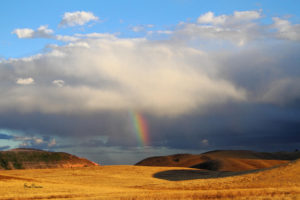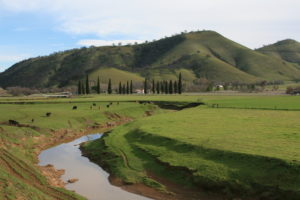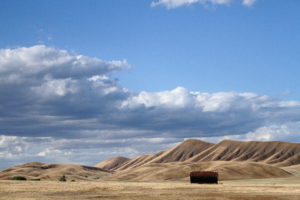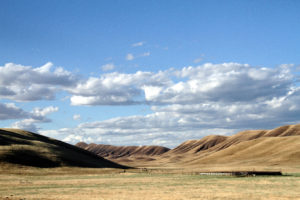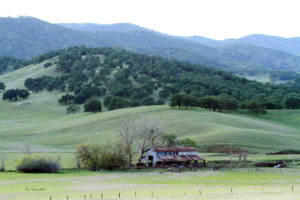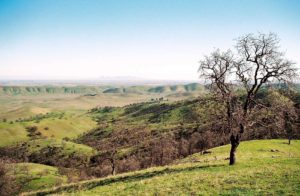Breaking News:
Friends of the River, Center for Biological Diversity, California Sportfishing Protection Alliance, California Water Impact Network, and Save California Salmon file lawsuit against the Sites Reservoir Authority environmental impact statement for Sites Reservoir
Read the December 20, 2023, Center for Biological Diversity press release
Sites Project Authority Submits Rushed Application for Regulatory Streamlining, Environmental Groups Oppose
Read our October 23, 2023, press release | Read letter
Scientific Report: Yearly Greenhouse Gas Pollution From Proposed Sites Dam and Reservoir Project Would Equal 80,000 Gas-Powered Cars. New Patagonia & Friends of the River Study Estimates the Proposed Dam’s Annual Emissions.
Read our August 24, 2023, press release | Learn more
Friends of the River asks the U.S. EPA to deny $2.2 billion dollar loan.
Read our September 27, 2023, letter
URGENT: Stop the Sites Reservoir Boondoggle
The majestic Sacramento River is California’s largest, flowing almost 450 miles from its headwaters to its outlet at the Golden Gate on San Francisco Bay. The river’s watershed encompasses more than 25,000 square miles and is home to 2.2 million Californians.
The Sacramento River is an important source of water for state residents and is also a beloved recreation destination for millions of visitors.
Today, the Sacramento River faces an existential threat: the proposed Sites Reservoir, a boondoggle that could cost taxpayers billions of dollars and prevent investments in real solutions to our state's water woes.
The Painful Truth About Sites Reservoir
Do you know why Sites Reservoir hasn’t already been built when previous generations of water wasters dammed up so much of the state? Because it was an inferior location then, and it’s even more of a boondoggle today. While its impact on overall state water supplies would be minimal, its impact on the environment could be devastating. Species brought to the brink of extinction during the last dam boom may not recover if Sites is constructed.
If constructed, According to the Sites Project Authority preferred model, Sites Reservoir would only expand overall water availability in California by less than 1% — just 0.657% on average — and during long drought spells, it would sit useless. Yet the harm caused to waterways throughout California would be permanent and irreversible.
The reality is California has over-allocated water from the Sacramento River by 151%—that means that there are more rights to divert water out of the river than the river can provide in an average water year. Sites would allow its investors to divert and sell even more of the over-allocated water, further diminishing Spring flows in the Sacramento River and the Delta. The reservoir itself would drown thousands of acres of grassland, oak woodland, and riparian habitat, further imperiling threatened and endangered species throughout the Sacramento River watershed.
Indeed, to talk about Sites Reservoir as a single project is misleading. The Sites Project Authority wants to build TWO massive dams and nine other dams, combined to flood the Antelope Valley and forever alter a picturesque landscape and habitat. More than 78 miles of the Sacramento River would see reduced or altered water flows. Millions of Californians would see their communities forever altered and livelihoods jeopardized.
In some months, Sites could reduce flows in the Delta by 11%; Trinity River by up to 17%; Feather River by up to 18%; American River by up to 16%; Sutter Bypass by up to 21%; and Yolo Bypass by up to 36%. This impacts communities — including fishing and tourism economies — all over Northern California. During critically dry years, Sites could allow water diversions to take more than half of the Sacramento River’s flow. California communities deserve better!
We Can't Fix Past Mistakes, But We Can Prevent New Ones
Today, the Sacramento River sustains five runs of Chinook salmon and steelhead trout, as well as more than 200 bird species that depend on the river’s riparian and wetland habitat. Previous dams, excessive water diversions from the river, and clearing of habitat have brought the salmon, and many other fish and wildlife species, to the brink of extinction. Salmon populations are in such dire condition that this year, for only the third time in history, the government closed both commercial and recreational salmon fishing throughout California and much of Oregon.
For more than three decades, government agencies and conservation organizations have worked tirelessly to protect and restore the habitats once lost.
Additionally, more than 144 prehistoric and historic sites are located within the reservoir footprint. Some may be eligible for inclusion on the National Register of Historic Places. If the Reservoir is constructed, they will be lost forever.
Don’t believe the dam lobby’s empty promises about the environment. Many conservation groups are united in opposition to the Sites Reservoir, because we’ve seen this play before. They always promise the world every time a new dam is built, and they always fail to deliver. Every major dam and water project in California has been promoted by water agencies and politicians as enhancing and protecting the environment. Decades later, salmon and other fish species are plummeting toward extinction, and our water quality is suffering, largely due to these projects.
We can’t let them undermine the progress we’ve made in restoring and protecting this precious land. Join us in the fight to save the Sacramento River and Stop the Sites Reservoir Boondoggle.
There Are Better Alternatives
The state’s dammers want you to believe that multi-billion dollar dams and reservoirs are the last best solution to California’s water shortages. They’re wrong.
We don’t need to destroy the environment to increase water availability. Countless viable alternatives exist — if we fund and prioritize them — and they’re often cheaper and more reliable, while also being more sustainable.
While prolonged periods of drought and infrequent but severe episodes of precipitation will, without a doubt, impact California’s water security, FOR rejects the notion that there is one golden-ticket solution to securing our water future. FOR endorses a portfolio of viable alternatives to Sites Reservoir and other proposed large-scale damming projects:
- Agricultural land use diversification – California’s agricultural industry represents 2% of California’s economy yet 80% of its water use. We celebrate the contributions of California farmers, but California has not sufficiently disincentivized the growing of water-intensive crops such as alfalfa, almonds, and pistachios, primarily for foreign exports. Reservoir projects like Sites are expected to primarily provide more water to large-scale farms so they can continue growing these wasteful crops.
- Improving agricultural water management and efficiency – Many of California’s extremely water-strained farmlands still do not implement the latest methods of water conservation. More efficient modes of irrigation like drip and micro irrigation have the potential to save 5.6 to 6.6 million acre-feet of water annually in the state.
- Urban water recycling and conservation – Approximately 400 billion gallons of treated water are discarded into the ocean or California estuaries annually (1.2 million acre-feet/year). Potable and onsite water reuse are significantly under tapped sources for water supply in California. Additionally, researchers have estimated that, with investments in water efficiency, California could decrease urban water use by 30%–48%.
We can achieve water security for California with a water distribution system that prioritizes the ecological health of the Bay-Delta Watershed, and the human right to water.
We can prioritize food security and equitable allocation of agricultural water along with urban conservation and utilization of local supplies. We must transition away from large storage and conveyance projects, and toward conservation, efficiency, and ecological restoration.
Sue Graue Antelope Valley Photos
Sue Graue provided this photo gallery of Antelope Valley, the proposed location for Sites Reservoir. You can use these photos with credits to Sue.
Resources, Comments, & Documents
Fox Weather: Ron Stork Interview
2023-12-21 Conservation Groups Sue Over Sites Reservoir (Courthouse News)
2023-12-20 Enviros file suit on Sites EIR (Daily Kos)
2023-12-20 Push to build biggest California reservoir in decades hit with lawsuit (SF Chron)
2023-12-17 Building the biggest reservoir in 50 years (Merc News)
23-12-12 Whatever Became of the Auburn Dam (Comstocks)
2023-12-12 Officials approve final environmental study for Sites (Spectrum 1)
2023-11-29 Gov Newsom disappoints environmentalists (Sac Bee)
23-11-24 Sites Reservoir project finally gets green light (CapRadio)
2023-11-21 Sites approval sparks controversy (KRCR)
2023-11-21 Why is Sites being fast-tracked (Hiltzik - LA Times)
2023-11-21 Sites moving forward after EIR (The Sun)
2023-11-19 Sites Authority certifies EIR (CBS 13 KOVR)
2023-11-17 Conservation and Fishing Groups Condemn Approval of Sites (Daily Kos)
2023-11-15 Sites on fast track for final legal greenlight (Ag Alert)
2023-11-15 Sites Funding lined up (Sac Bee)
2023-11-15 Sites sparks mixed feelings in Northstate (KRCR)
2023-11-15 Environmentalists blast Newsom on Sites (Sac News & Review)
2023-11-7 Gov Newsom fast-tracks Sites (Sac Bee)
2023-11-2 USBR & Sites EIR announced (Sites Authority Press Release)
2023-10-31 Sites Reservoir would cause greenhouse emissions (Sac Bee op ed)
2023-8-30 Sites Reservoir is not the water solution (Cal Matters op ed)
2023-8-24 Sites & Greenhouse gases (LA Times)
2023-6-21 Pacific Flyway birds are counting on Sites (Cal Matters)
2023-4-17 Will California Get Enough Rain to Fill Its Pricey New Reservoir (Undark)
2023-2-27 Sites has been planned for decades (Cal Matters)
2023-1-4 Sites Reservoir awarded $80 million (Appeal Democrat)
2022-8-26 Sites may be derailed by H20 shortages (SF Chron)
2022-7-6 Solutions Run Dry (Sac Bee)
2022-7-6 Solutions Run Dry Sacramento Bee print edition pages
2022-6-1 Enviros sharpen their knives against Sites (The Sun)
2022-5-31 Drought resurrects controversial Sites dam (LA Times)
2022-3-22 Finally progress on vital Sites (Walters - Cal Matters)
2021-5-24 Tunnel & Sites will ensure water supply (Cal Matters)
2021-4-22 Salmon Advocates Criticize Gov on Sites (Daily Kos)
2020-12-28 Sites Reservoir reaches milestone (Woodland Daily Democrat)
2020-6-24 Interior requests funding for Sites (Daily Kos)
2020-5-11 Sites Reservoir scaled back (Merc News)
2019-7-7 California needs Sites (Cal Matters)
2019-1-31 USBR gets sharp elbows (E&E News)
2019-2-21 Sites offers solutions (Ag Alert - Watson op ed)
2019-2-15 LA taking huge role at Sites (Sac Bee)
2018-12-18 Sites has years of advocacy ahead (Appeal Dem ed)
2018-11-30 Delta water deal backed (Sac Bee)
2018-11-27 Trump officials announce $450 million loan (R R Searchlight)
2018-9-26 State's largest new reservoir likely to face restrictions (Water Deeply)
2018-7-27 Sites begins securing more funding (Appeal Dem)
2018-7-28 Water moves in Brown's final months (Dan Walters SF Chron)
2018-11-27 Lameduck Rep. sees payoff for Sites efforts (Manteca Bulletin)
2018-7-24 Sites gets $800 million boost (Sac Bee)
2018-4-20 CA announces tentative funding for giant dams (SF Chron)
2018-11-27 Lameduck Rep. sees payoff for Sites efforts (Manteca Bulletin)
2018-9-26 State's largest new reservoir likely to face restrictions (Water Deeply)
2018-7-28 Water moves in Brown's final months (Dan Walters SF Chron)
2018-7-27 Sites begins securing more funding (Appeal Dem)
2018-4-20 CA announces tentative funding for giant dams (SF Chron)
2018-2-20 CA is about to start spending on dams (Sac Bee)
2017-1-24 Brown joins Trump resistance (Dan Walters - Sac Bee)
2016-11-14 Is Sites the Savior of the Sac Valley (Sac Bee)
2106-10-27 Money is next big step on Sites (Woodland Daily Dem)
2014-8-19 Dams are not the Answer (Phillips Sac Bee op ed)
2014-6-1 Should California use taxpayer dollars to build more dams (Sac Bee)
An Update on the Sites Project
Ron Stork, 6/30/2022 (with minor update-edits on June 3, 2023)
It’s close to show time for the proposed giant 1.5-million acre-foot Sites reservoir, designed to gather the flows of the Sacramento River and deliver it into this valley to the river’s west. This old deadbeat dam proposal, the beneficiary of almost $900 million in state taxpayer gifts (and with the prospect of much more), has finally filed for the water rights necessary to operate the project.
Assuming that the State Water Resources Control Board (under pressure from the Governor) is willing to issue water rights, the conditions about when and where and how much the project can divert water from the Sacramento River will be critical to the ecosystems of the State’s most productive and dependable river. And these water rights conditions will also do much to affect the feasibility of the project — as will the degree of free money from state and federal taxpayers.
On June 2, 2023, the Board issued a “notice” to the public, giving us until August 1, 2023, to join in the upcoming water rights proceeding by filing a “protest.” Here, at Friends of the River, we and other key allies plan on joining in the fray.
The Sites Reservoir Authority has more than $40 million in state taxpayer dollars, nearly half a billion-dollar loan from the U.S. Department of Agriculture, and the prospect of a multibillion dollar load from the U.S. Environmental Protection Agency. The Authority also has many tens of millions of “skin in the game” money from project “investors,” mostly in southern California. These investors are trying to reserve “storage,” speculating that the project can divert enough water that the “storage” will translate into enough wet water to make it worth their while.
So this will be a tough water rights proceeding for the river folks. The spending advantage that the Sites Reservoir Authority has over us will be formidable.
Nevertheless, we will have to be there. The river, the riparian forest along its banks, and the fish and the aquatic ecosystems of the state’s largest river are depending on us.
Expect to hear more about this in the following months.
BILLS-116HR133SA-RCP-116-68 (Reclamation provisions) the pending FY 2020/2021 omnibus appropriations bill
Fox Weather: Ron Stork Interview
2023-12-12 Officials approve final environmental study for Sites (Spectrum 1)
2023-11-29 Gov Newsom disappoints environmentalists (Sac Bee)
23-11-24 Sites Reservoir project finally gets green light (CapRadio)
2023-11-21 Sites approval sparks controversy (KRCR)
2023-11-21 Why is Sites being fast-tracked (Hiltzik - LA Times)
2023-11-21 Sites moving forward after EIR (The Sun)
2023-11-19 Sites Authority certifies EIR (CBS 13 KOVR)
2023-11-17 Conservation and Fishing Groups Condemn Approval of Sites (Daily Kos)
2023-11-15 Sites on fast track for final legal greenlight (Ag Alert)
2023-11-15 Sites Funding lined up (Sac Bee)
2023-11-15 Sites sparks mixed feelings in Northstate (KRCR)
2023-11-15 Environmentalists blast Newsom on Sites (Sac News & Review)
2023-11-7 Gov Newsom fast-tracks Sites (Sac Bee)
2023-11-2 USBR & Sites EIR announced (Sites Authority Press Release)
2023-10-31 Sites Reservoir would cause greenhouse emissions (Sac Bee op ed)
2023-8-30 Sites Reservoir is not the water solution (Cal Matters op ed)
2023-8-24 Sites & Greenhouse gases (LA Times)
2023-6-21 Pacific Flyway birds are counting on Sites (Cal Matters)
2023-4-17 Will California Get Enough Rain to Fill Its Pricey New Reservoir (Undark)
2023-2-27 Sites has been planned for decades (Cal Matters)
2023-1-4 Sites Reservoir awarded $80 million (Appeal Democrat)
2022-8-26 Sites may be derailed by H20 shortages (SF Chron)
2022-7-6 Solutions Run Dry (Sac Bee)
2022-7-6 Solutions Run Dry Sacramento Bee print edition pages
2022-6-1 Enviros sharpen their knives against Sites (The Sun)
2022-5-31 Drought resurrects controversial Sites dam (LA Times)
2022-3-22 Finally progress on vital Sites (Walters - Cal Matters)
2021-5-24 Tunnel & Sites will ensure water supply (Cal Matters)
2021-4-22 Salmon Advocates Criticize Gov on Sites (Daily Kos)
2020-12-28 Sites Reservoir reaches milestone (Woodland Daily Democrat)
2020-6-24 Interior requests funding for Sites (Daily Kos)
2020-5-11 Sites Reservoir scaled back (Merc News)
2019-7-7 California needs Sites (Cal Matters)
2019-1-31 USBR gets sharp elbows (E&E News)
2019-2-21 Sites offers solutions (Ag Alert - Watson op ed)
2019-2-15 LA taking huge role at Sites (Sac Bee)
2018-12-18 Sites has years of advocacy ahead (Appeal Dem ed)
2018-11-30 Delta water deal backed (Sac Bee)
2018-11-27 Trump officials announce $450 million loan (R R Searchlight)
2018-9-26 State's largest new reservoir likely to face restrictions (Water Deeply)
2018-7-27 Sites begins securing more funding (Appeal Dem)
2018-7-28 Water moves in Brown's final months (Dan Walters SF Chron)
2018-11-27 Lameduck Rep. sees payoff for Sites efforts (Manteca Bulletin)
2018-7-24 Sites gets $800 million boost (Sac Bee)
2018-4-20 CA announces tentative funding for giant dams (SF Chron)
2018-11-27 Lameduck Rep. sees payoff for Sites efforts (Manteca Bulletin)
2018-9-26 State's largest new reservoir likely to face restrictions (Water Deeply)
2018-7-28 Water moves in Brown's final months (Dan Walters SF Chron)
2018-7-27 Sites begins securing more funding (Appeal Dem)
2018-4-20 CA announces tentative funding for giant dams (SF Chron)
2018-2-20 CA is about to start spending on dams (Sac Bee)
2017-1-24 Brown joins Trump resistance (Dan Walters - Sac Bee)
2016-11-14 Is Sites the Savior of the Sac Valley (Sac Bee)
2106-10-27 Money is next big step on Sites (Woodland Daily Dem)
2014-8-19 Dams are not the Answer (Phillips Sac Bee op ed)
2014-6-1 Should California use taxpayer dollars to build more dams (Sac Bee)

